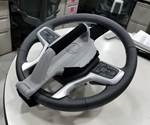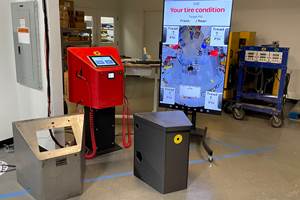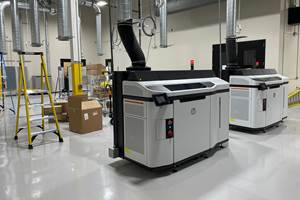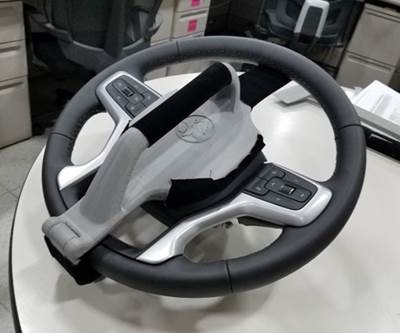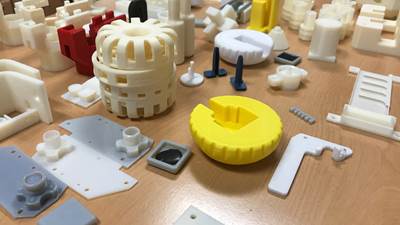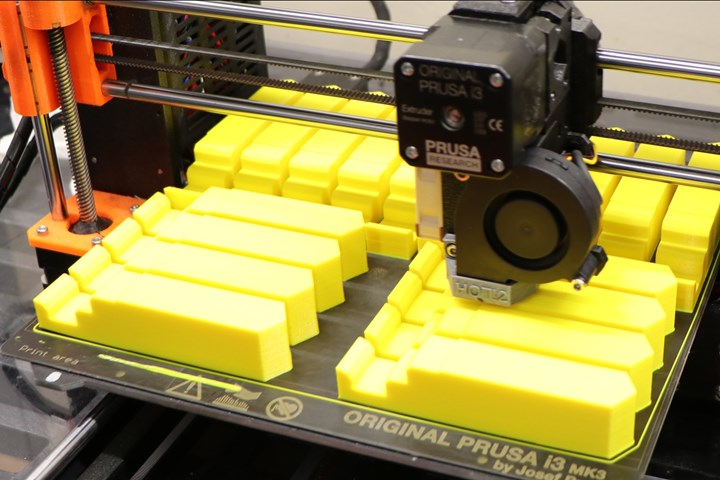
Among Ford Motor Company’s groundbreaking additive manufacturing (AM) research and development taking place today on a global scale, the iconic car company’s most prolific production of 3D-printed parts may be coming from a 63-year-old transmission plant tucked away in a quiet suburb of Cincinnati, Ohio.
The facility is called the Sharonville Transmission Plant (STP) and it’s where two additive manufacturing champions, Jonné Messer and Jeff Fisher took their own initiative to learn about CAD modeling and 3D printing in order to solve a problem — or several problems — that were inhibiting the plant’s ability to operate smoothly and efficiently.
The type of 3D printing we’re talking about here is relatively simple: fused deposition modeling (FDM) of thermoplastic polymers using Prusa and LulzBot 3D printers purchased at a retail store. But this only makes the fact that Messer and Fisher are potentially saving Ford millions of dollars through the use of these printers even more impressive.
Here are a few examples of the additive manufacturing innovation taking place at Ford — not at its $45 million Advanced Manufacturing Center or some R&D lab, but behind the scenes at a decades-old transmission plant in Ohio, led by two lifelong employees who saw a way to do things better and took it upon themselves to do so.
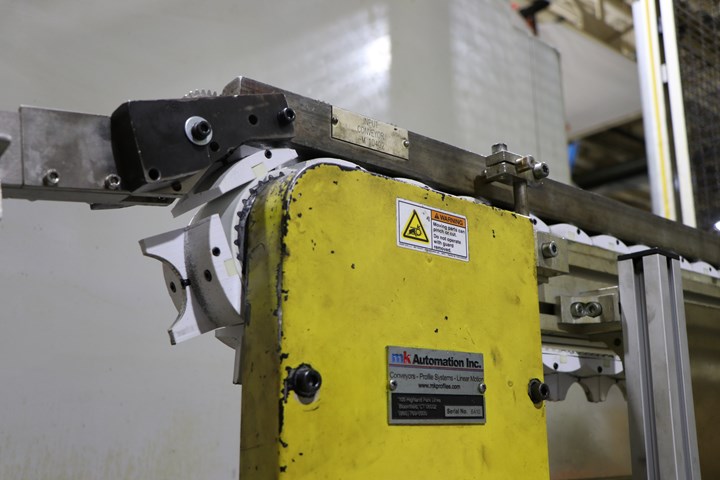
The 3D-printed pucks grip and drive the assembly line rail forward. These pucks were the first parts to be printed at STP, and they alone have saved the company hundreds of thousand of dollars. Photo credit: Sharonville Transmission Plant
Assembly Line Pucks
There are 67 pucks on each of the nine assembly lines at STP. The job of each puck is to grip the rail of a moving conveyor line and drive it forward to carry parts from station to station. The parts are heavy and the lines run 24/7, which means that the pucks break often. A broken puck brings the entire line to a halt, which costs the plant in two distinct ways:
- Production stops for up to several hours while the puck is replaced, costing the plant considerable revenue via lowered throughput.
- Each replacement puck costs $180. The plant was losing an average of two pucks per shift every single day. Total yearly replacement costs? An estimated $394,000.
Today, Messer and Fisher 3D print these pucks out of a PLA at a cost of 50 cents each. The PLA is more flexible than the original material and the pucks last considerably longer. The total cost of replacing every single puck on all nine assembly lines is $301.50.
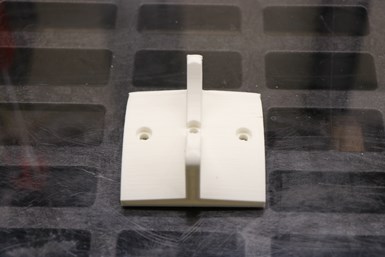
A 3D-printed puck for an STP assembly line. The cost to print these pucks out of a PLA is 50 cents each, versus $180 for a single traditional puck. Photo credit: Sharonville Transmission Plant
All told, in the four years since Messer and Fisher began 3D printing pucks and other replacement parts for the company, they have saved the plant over one million dollars, and likely over two million.
The pucks were actually the catalyst for 3D printing at the plant back in 2017. Neither Messer nor Fisher had any experience with 3D printing, but after learning how much the replacement parts cost and seeing the downtime that resulted from broken pucks, the two came up with an idea about redesigning and printing the parts. As Messer explains, they took the idea to their boss: “We said, ‘Hey, Nick, we have an idea that we’d like to prototype before we ever spend any real money.’ And we talked to him about it and then ran down to Microcenter and bought a LulzBot 3D printer. And (Nick’s) only requirement for us was that we lock ourselves in a room, learn how to do it and don't make toys. What's funny is the first thing they have you make on the LulzBot is an octopus model that comes preloaded when you get it. So we broke the rules right off the bat! But we got (the puck) printed, we installed it on the line and tried it out. And it worked beautifully. That was 2 ½ years ago. It's still there to this day.”
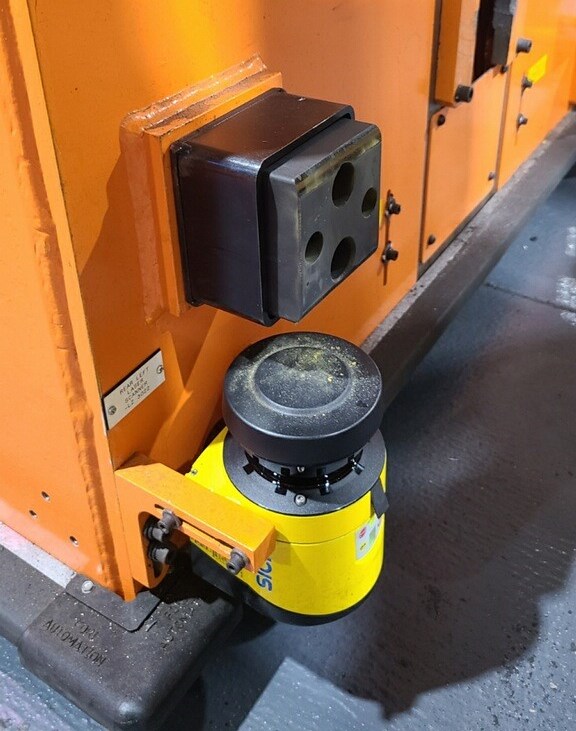 This 3D-printed bumper for an AGV contains springs to soften the blow if it lightly bumps into something. Normally, these light bumps would trigger a shutdown of the AGV. Photo credit: Sharonville Transmission Plant
This 3D-printed bumper for an AGV contains springs to soften the blow if it lightly bumps into something. Normally, these light bumps would trigger a shutdown of the AGV. Photo credit: Sharonville Transmission PlantAGV Bumper Pads
This idea came from workers in STP’s garage unit that houses a fleet of automatic guided vehicles (AGVs) that transport parts to different areas of the plant. It is not uncommon for these autonomous vehicles to bump into things from time to time, which the vehicle often mistakes for an accident and results in a shutdown — even when the contact is minor. The AGV then needs to be reset, which can result in significant downtime if it’s located at a far end of the plant and not noticed right away.
Messer and Fisher’s colleagues asked them whether they could print a bumper that would enable springs to be placed behind it to soften the blow and not trigger a shutdown of the AGV. They provided Messer and Fisher with springs that they wanted to use as well as the metal casing that holds the bumper. When the parts are married together, the result is a bumper that floats a small distance from the AGV body, which reduces or eliminates the automatic shutdown for minor bumps. “And since they've started this, they're having no downtime,” Messer says. “They're wanting to do it plantwide now with every AGV. All of the tests have proven it to be a phenomenal savings for them.”
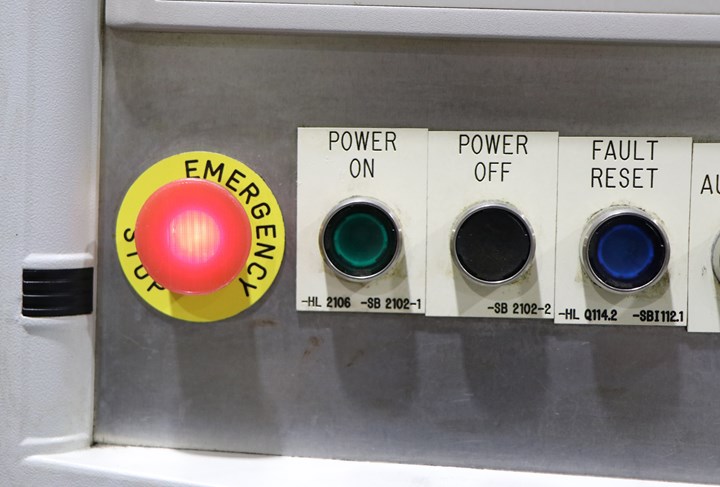
The stop button interfaces with a switch underneath them that could be easily disconnected to allow for replacement of the button itself. The replacements used to cost STP $100 each, but now cost 5 cents to 3D print. Photo credit: Sharonville Transmission Plant
Emergency Stop Button
A deceptively simple solution, the 3D printed emergency stop button is exactly what it sounds like. But the story lies in what is behind the button, which is now 3D printed with a translucent red PLA material. The buttons interface with a switch underneath them that could be easily disconnected to enable replacement of the button itself. The replacements, believe it or not, cost STP $100 each, but they were relatively easy to unscrew and swap out. That lasted until a few years ago when the OEM decided to redesign its switches, including a complete rewiring of the connectors to the button itself.
The new configuration required manual connections of the switch wires beneath the buttons, a procedure that took several times as long as it used to before the reconfiguration. But 3D printing the buttons to accommodate the existing wiring setup solved the issue.
“This was a threshold part for me,” Jeff Fisher says, “because this is where I learned to draw threads. And we successfully printed the thread right on the part. So all you have to do is unscrew the bad button and screw the new one on and you're out of there. And it costs like a nickel to print.”
Versus $100.
“When we do a batch, we'll do 400 or 500 of them,” Messer says. “People just come down and get baggies of them and take them back to their department and walk through and screw them on.”
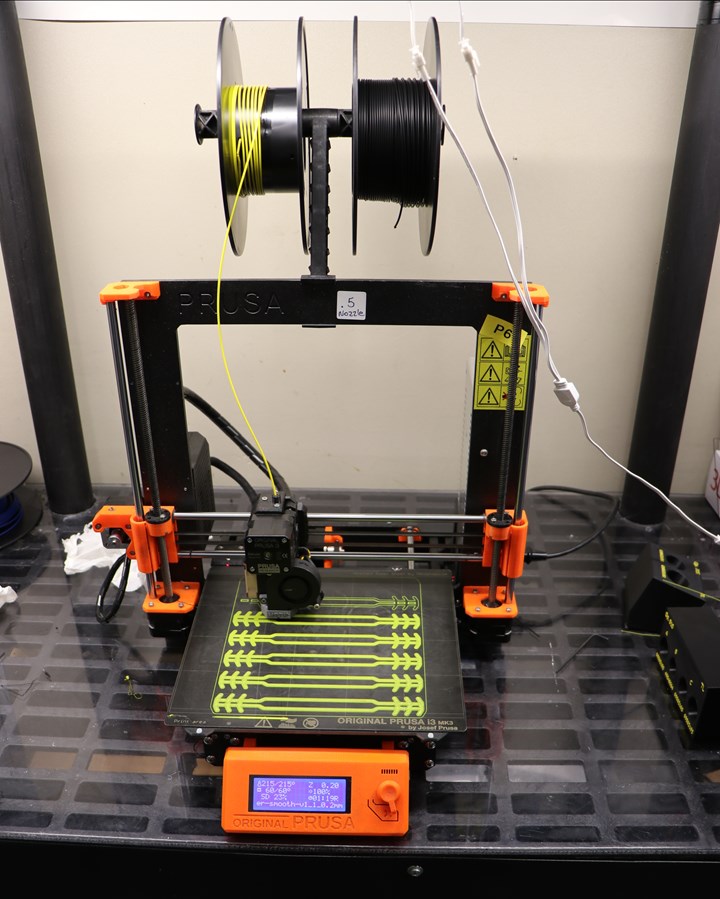
When STP reopened after briefly shutting down during the onset of COVID-19, employees complained about the face masks hurting their ears. Messer and Fisher now print thousands of neck straps for the plant workers. Photo credit: Sharonville Transmission Plant
Facemask Straps
STP briefly shut down during the onset of COVID-19 until it was categorized as an essential business. When it reopened, employees were required to wear masks — a condition that elicited numerous complaints from workers who said the masks began to hurt their ears after several hours of daily use.
“So we immediately went into producing these straps as soon as we got back,” Messer says. “And we've made, dear Lord, thousands of them. People come and get them all the time because we're still wearing masks every day.”
Messer and Fisher learned that several people with longer hair at the plant didn’t like the original strap design because their hair became tangled up toward the back of the strap. “So we made another design for them to wear so their hair wouldn't get tangled up. It’s smooth and flat on the back, so their hair doesn't get tangled up in it.” The straps are printed with PLA at a thickness of 1 millimeter to enable flexibility.
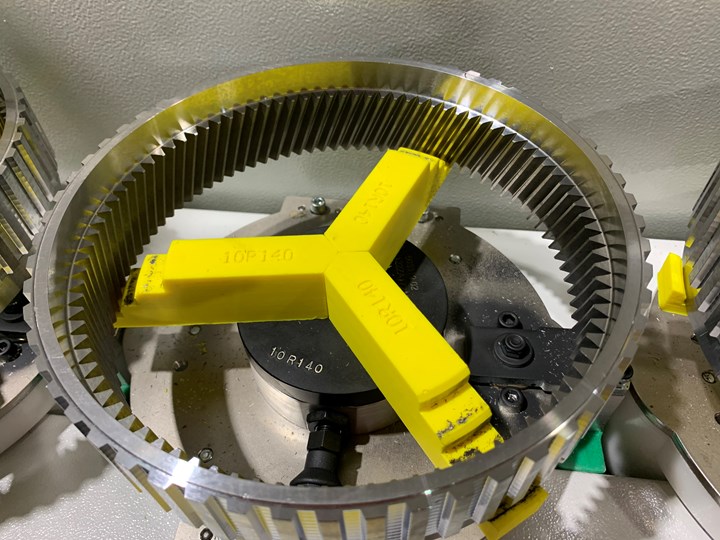
A broaching operation for transmission ring gears was damaging the steel rings because of the specialized metal fixtures that were formerly used to hold the rings in place. 3D printing the fixtures out of PETG solved the problem, putting a $1 million problem to rest. Photo Credit: Sharonville Transmission Plant
Pallet Fixtures
A broaching operation for transmission ring gears was resulting in nicks and scrapes to the steel rings due to specialized fixtures used to hold the rings in place. The nicks were actually occurring when an overhead gantry system lifted and placed the four different sizes of rings onto the finger-shaped pallet fixtures, which, until recently, were produced out of steel.
“So, if you can imagine, three of these fingers get bolted into a star pattern onto the pallet that travels around a conveyor,” Fisher says. “And those rings set right on that pallet, but they're three different diameters. So, on the end of these fingers, you've got steps. Those steps are different diameter ring gears that go on that pallet.”
When the line workers realized what was happening, they came to Messer and Fisher.
“So they came and asked if it was possible for us to come up with a finger out of the plastics we’d been printing with — in this case, we actually use PETG. It took us about five generations to get them exactly right, but when we did the nicks went completely away. And this was a $1 million quality issue that is now behind us.”
Fisher and Messer now print the finger fixtures in different colors to signify the exact model numbers traveling down the line.
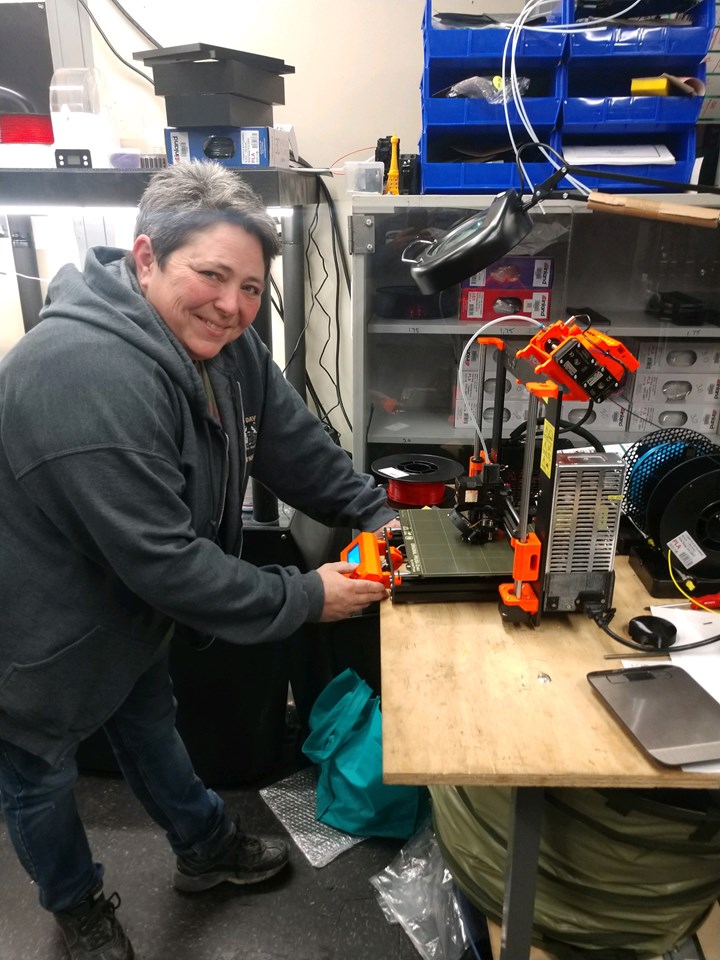
Jonné Messer a skilled trades team leader and is in her 23rd year with the company. She became a certified additive technician in 2019. Photo Credit: Sharonville Transmission Plant
Jonné and Jeff
Jeff Fisher, 53, has been with Ford for 23 years. Today, he serves as a millwright at STP, working on the installation, repair and maintenance of the plant’s industrial equipment as well as overseeing its preventive maintenance requirements. Jonné Messer, 49, is a skilled trades team leader, and is also in her 23rd year with the company. Her central role is to order replacement parts for existing machinery as well as investigate and select new equipment as needed. After some initial success 3D printing the assembly line pucks, the two enrolled in Cincinnati State’s additive manufacturing certification program and are now certified AM technicians. Their new roles at the plant have been a tremendous boost to productivity and morale.
“I love coming to work,” Messer says. “I absolutely love it. I love the fact that we don't know what we're going to walk into each day and what we're going to get to do. We don't come in and check a box. When things break, we can reverse engineer them and print them out for people who need them. And then they're like, ‘Oh my gosh, I can't believe you guys can do that.’ I mean, it's very fulfilling.”
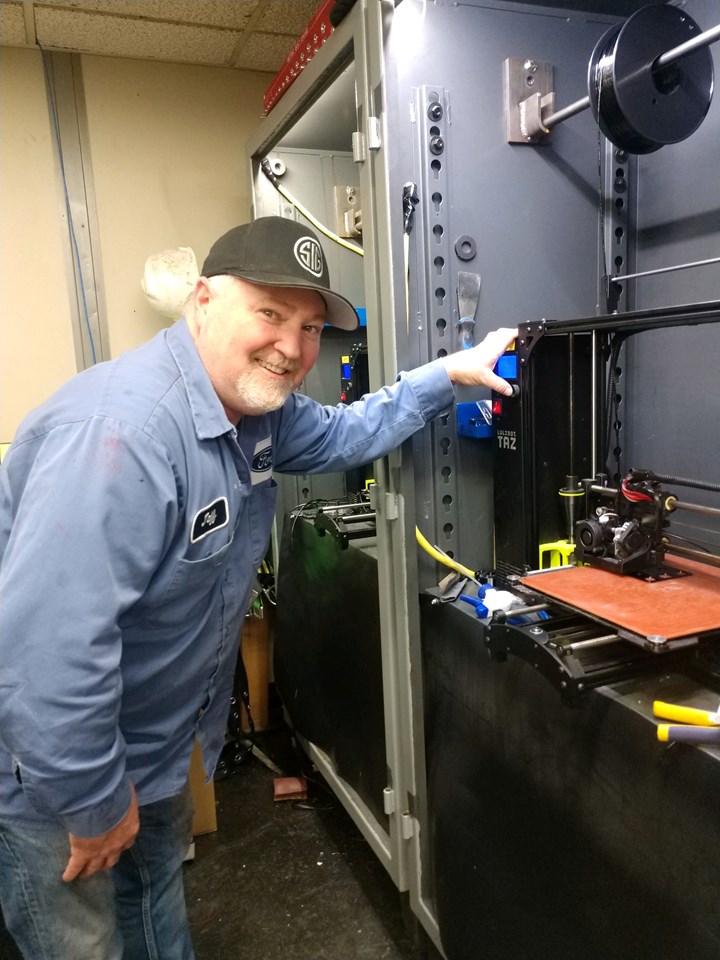
Jeff Fisher has also been with Ford for 23 years. Today, he serves as a millwright at STP, working on the installation, repair and maintenance of the plant’s industrial equipment as well as overseeing its preventive maintenance requirements. He also became a certified additive manufacturing technician in 2019. Photo credit: Sharonville Transmission Plant
“We've made some pretty amazing pieces for people,” Fisher adds. “And, like she said, being in trades can get monotonous when you're at it every day for 22 years if you're doing the same thing day in and day out. But I love every aspect of this. Every piece somebody brings me is a challenge and I enjoy that. It gives you some self-gratitude and makes you feel good.
“It's also the people we have gotten to meet since we did this. There are people that I may have never even spoke to or known, and they'll come down here and be like, you're Jonné, right? Or you're Jeff. We hear you guys are the 3D people. Can you help us out with this? And then we'll sit there and we'll get to talk to them, and we'll end up being friends. You walk down the aisle, and you'll still call each other by name.”
“It’s a good mix,” Fisher says. “We both pretty much do everything together, yet we can both work totally self-sufficiently from start to finish. From the design and drawing to printing. Most of the time, we're working on a couple of different things. She'll be doing something for one department and I'll be doing something for somebody else. But we're both very familiar with CAD and all the software. So it's a good pairing for us, because we work so well together.”
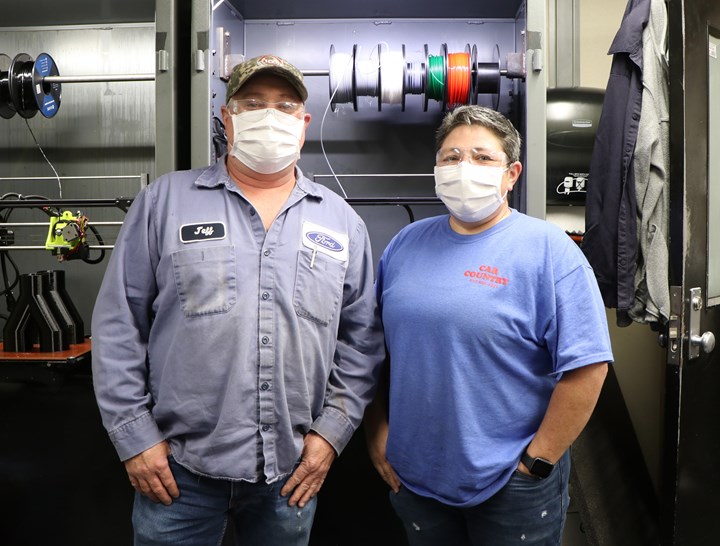
Jeff Fisher and Jonné Messer. Photo Credit: Sharonville Transmission Plant
Related Content
Faster Iteration, Flexible Production: How This Inflation System OEM Wins With 3D Printing
Haltec Corp., a manufacturer of tire valves and inflation systems, finds utility in 3D printing for rapid prototyping and production of components for its modular and customizable products.
Read MoreWhat Does Additive Manufacturing Readiness Look Like?
The promise of distributed manufacturing is alluring, but to get there AM first needs to master scale production. GKN Additive’s Michigan facility illustrates what the journey might look like.
Read More8 Cool Parts From Formnext 2024: The Cool Parts Show #78
End-use parts found at Formnext this year address various aspects of additive's advance, notably AM winning on cost against established processes.
Read MoreBMW Expands Use of Additive Manufacturing to Foster Production Innovations
The BMW Group is manufacturing many work aids and tools for its own production system using various 3D printing processes, with items such as tailor-made orthoses for employees, teaching and production aids, and large, weight-optimized robot grippers, which are used for such things as carbon fiber-reinforced polymer roofs and entire floor assemblies.
Read MoreRead Next
How 3D Printed Tools Add Value at This GM Plant
General Motors’ Spring Hill, Tennessee, facility is finding opportunities to replace conventional tooling components with 3D printed alternatives made in house. The result is cheaper tooling on a shortened timeline, with better functionality.
Read MoreEmpathy in Engineering: 3D-Printed Accommodations for the Workforce
For manufacturers with employees who suffer from mobility issues, additively manufactured custom tools go hand-in-hand with increased productivity.
Read MoreProfilometry-Based Indentation Plastometry (PIP) as an Alternative to Standard Tensile Testing
UK-based Plastometrex offers a benchtop testing device utilizing PIP to quickly and easily analyze the yield strength, tensile strength and uniform elongation of samples and even printed parts. The solution is particularly useful for additive manufacturing.
Read More


